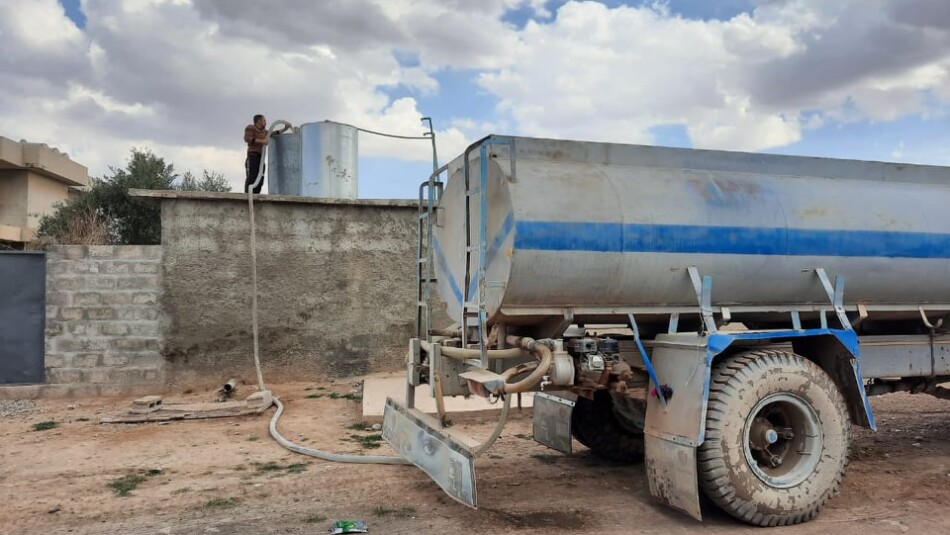
The people of Shingal are facing a water shortage as seven main wells in the district have dried up.
This scarcity has affected most neighborhoods in Shingal, and the situation is worsening as the summer season approaches, increasing the demand for water compared to the spring season.
Ibrahim Hussein, a resident of the eastern neighborhood of the city center, shared, "We only receive water twice a month. We are forced to purchase water from tankers at a cost of 20,000 dinars per week." Each 2,000 liters of water costs 7,000 dinars, leading
Ibrahim to spend about 100,000 Iraqi dinars IQD (USD70) per month on water.
According to Hussein, low rainfall, drought, unfair water distribution among neighborhoods, and an outdated water distribution network in need of repair are all contributing factors to the lack of access to drinking water in Shingal.
We only receive water twice a month
Shingal, a district in Nineveh province with 7,000 subscribers (families) of the water service, relies on wells and springs for water supply. However, the district is currently facing challenges after seven out of 38 wells have dried up.
Mahdi Qasim, director of the Shingal Water Office, stated, "The lack of rainfall, drying up of our main wells, and overuse of the water network are the primary reasons for the water shortage."
Nearly 3 out of 5 children in Iraq have no access to safely managed water services and less than half of all schools in the country have access to basic water risking children’s health, nutrition, cognitive development, and future livelihoods, says the UNICEF, the United Nations International Children's Emergency Fund, report (Running Dry: water scarcity threatens lives and development in Iraq) on August 29, 2021, about World Water Week.
“As we mark World Water Week, over 2 million children and their families will face significant lack of water by 2030 if now action is taken now.”
The key drivers behind water scarcity in the region and Iraq include rising agricultural demandm and the expansion of irrigated land using aquifers. Rising food demand, urbanization, poor water management as well as climate change have combined to threaten children, the poor and the marginalized, report states.
"In Iraq, the 2020-2021 rainfall season was the second driest in the last 40 years, caused a reduction of water flow in Tigris and Euphrates by 29% and 73% respectively. "
The Nineveh Water Directorate has been requested to drill 20 new wells to improve the water distribution network in Shingal.
Residents like Dakhil Khalaf from the Azadiya neighborhood have been experiencing water shortages for over three months, receiving water only once a week.
The Nineveh local government is implementing the "United Shingal Water" project, aiming to provide drinking water from the Tigris River to Shingal, as well as the districts of Ba'aj, Qairawan, and Rabia.
The project is expected to be implemented within five years.
Currently, there are 188,944 Internally Displaced People IDPs, mostly Yazidis, still residing in Duhok Northern Province, with 135,616 living in camps and the rest rented houses in the neighborhoods
Iraq is dependent on the Euphrates and Tigris Rivers, as well as their tributaries, which flow from neighboring countries such as Turkey (71%), Iran (16.9%), and Syria (4.1%). Additionally, about 8% of Iraq's water comes from internal sources. These surface water resources fulfill approximately 86% of Iraq's water needs, with the remaining 14% sourced from groundwater.